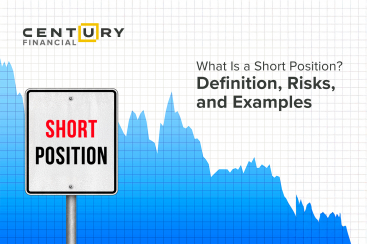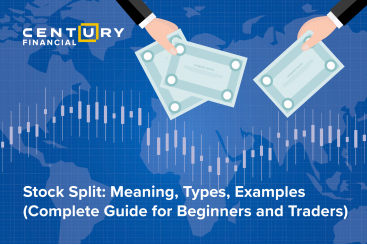
.jpg)
What Is the Federal Funds Rate?
The target interest rate range established by the Federal Open Market Committee (FOMC) is referred to as the federal funds rate. This target is the rate at which commercial banks borrow and lend their excess reserves to each other overnight.
Why does the Fed keep adjusting the interest rates?
The Federal Reserve, established by the American government as the nation's central bank, controls the money supply and averts economic disasters.
The Fed's role has expanded over time. It now mainly oversees the expansion of bank reserves and the money supply to encourage a steady expansion of the economy. To do this, the Fed employs three primary instruments.
.jpg)
1.
By setting bank reserve requirements
2.
By setting the discount rate
3.
Via open market operations
What are the factors based on which the Fed changes rates?
Fed analyses and makes decisions based on the same economic indicators everyone else can access.
The Fed analyses a lot of data, known as economic indicators, which come from both government and private sources. These indicators help the Fed understand how the economy is doing. The Fed uses three types of economic indicators: leading, lagging, and coincident.
Leading indicators are metrics used to forecast an economy's future movements. They aid in forecasting the direction of the economy.
Lagging indicators illustrate past events. It is a measurable factor that changes sometime after the economic, financial, or business variable with which it is correlated changes.
Coincident indicators occur in real time and clarify the state of the economy. Several indicators, including retail sales, employment rates, and GDP, are linked to economic activity.
Interpreting Economic Indicators
An economic indicator is only helpful if one interprets it correctly. History has shown strong correlations between economic growth, as measured by GDP, and corporate profit growth.
Here are some of the key economic indicators the Fed looks at to determine interest rates:
Consumer Price Index (CPI):
Keeping Tabs on Inflation
The Consumer Price Index (CPI) is a critical measure of inflation that reflects the average price change consumers pay for a basket of goods and services, such as food, housing, clothing, and transportation.
Because inflation impacts everyone's cost of living, including rent and grocery expenses, the Fed monitors the CPI closely. Since the CPI is based on historical data, it is regarded as a lagging indicator and is released monthly.
.jpg)
How the Fed Uses CPI Data?
When CPI data indicates inflation rises too quickly, the Fed may raise interest rates to slow economic activity. Higher interest rates make borrowing more expensive, which can cool consumer spending and business investment, helping to bring down inflation. Conversely, if the CPI shows that inflation is below target or the economy is weakening, the Fed might lower interest rates to encourage borrowing and spending, thereby stimulating economic growth.
For example, in 2022, the U.S. saw a significant rise in CPI due to supply chain disruptions and increased demand post-COVID-19 lockdowns. The Fed observed a CPI increase of over 7% year-over-year; a level not seen in decades. As a result, the Fed decided to raise interest rates several times during 2022 and 2023 to curb inflationary pressures. This strategy aimed to balance demand with supply, easing price increases and bringing inflation back toward the target level.
.jpg)
Gross Domestic Product (GDP):
A Snapshot of Economic Health
The value of all products and services generated in the nation is totalled and reported as GDP. Consider it as the yearly wage of a country; it indicates the amount of money that the nation earns. The Fed monitors GDP figures to assess whether the economy is expanding (growing) or contracting (recession).
In 2011, the GDP of the United States was $15 trillion, but the GDPs of China and Russia were $7.3 trillion and $1.86 trillion, respectively.For example, if the U.S. economy experiences a significant slowdown, with GDP growth falling for two consecutive quarters, the Fed might decide to cut interest rates in response to this (other factors remain constant). Lower interest rates make borrowing cheaper for businesses and consumers, encouraging investment and spending.
Unemployment:
A Sign of Economic Strain
The Bureau of Labor Statistics publishes monthly data on employed and unemployed individuals. The Fed monitors these figures closely. A high unemployment rate may indicate that the economy needs to be stimulated, forcing the Fed to cut interest rates to entice companies to take on more debt and hire workers.
For example, if a global pandemic causes widespread business closures and layoffs,.jpg)

Stock Market:
A Glimpse Into the Future
The stock market is comparable to a crystal ball to the Fed. Investor expectations regarding future corporate earnings are reflected in stock prices. According to some economists, the stock market provides indicators of the potential state of the economy six months ahead.
A rise in stock prices may signal optimism and increased consumer spending, while a price decline could portend difficulties.
For example, consider a scenario where positive economic data releases, including solid GDP growth and low unemployment, spark a rally in the stock market. Investors anticipate continued economic expansion and increased corporate profits. In response, the Fed observes the stock market and interprets it as a sign of a healthy and growing economy. To prevent the economy from overheating and inflation from rising too quickly, the Fed may raise interest rates to moderate economic activity gradually.
Other Important Indicators: The Bigger Picture
The Fed also examines many other indicators, such as retail sales (which show how much people are spending), consumer confidence (which tells how people feel about the economy), and new building permits (which indicate future construction activity).
Interestingly, even trends in Google searches can hint at what people are interested in or worried about, making them an unofficial economic indicator.
The content in this blog, including any research, analysis, opinions, forecasts, or other information (collectively, "Information"), is provided by Century Financial Consultancy LLC (CFC) for marketing, educational, and general informational purposes only. It should not be construed as investment advice, a recommendation, or a solicitation to buy or sell any financial instruments.
This Information may also be published across various channels, including CFC’s website, third-party platforms, newsletters, marketing materials, emails, social media, messaging apps, webinars, and other communications. While CFC strives for accuracy, we do not guarantee the completeness, reliability, or timeliness of any content. Any decisions made based on this Information are at your own risk. CFC accepts no liability for any loss or damage arising from its use.
Trading financial products involves significant risk and may not be suitable for all investors. Please ensure you fully understand the risks and seek independent professional advice if necessary.
Please refer to the full risk disclosure mentioned on our website.


__1439480927.jpg)

__310747107.jpg)




.png)
.png)
.png)
.png)


